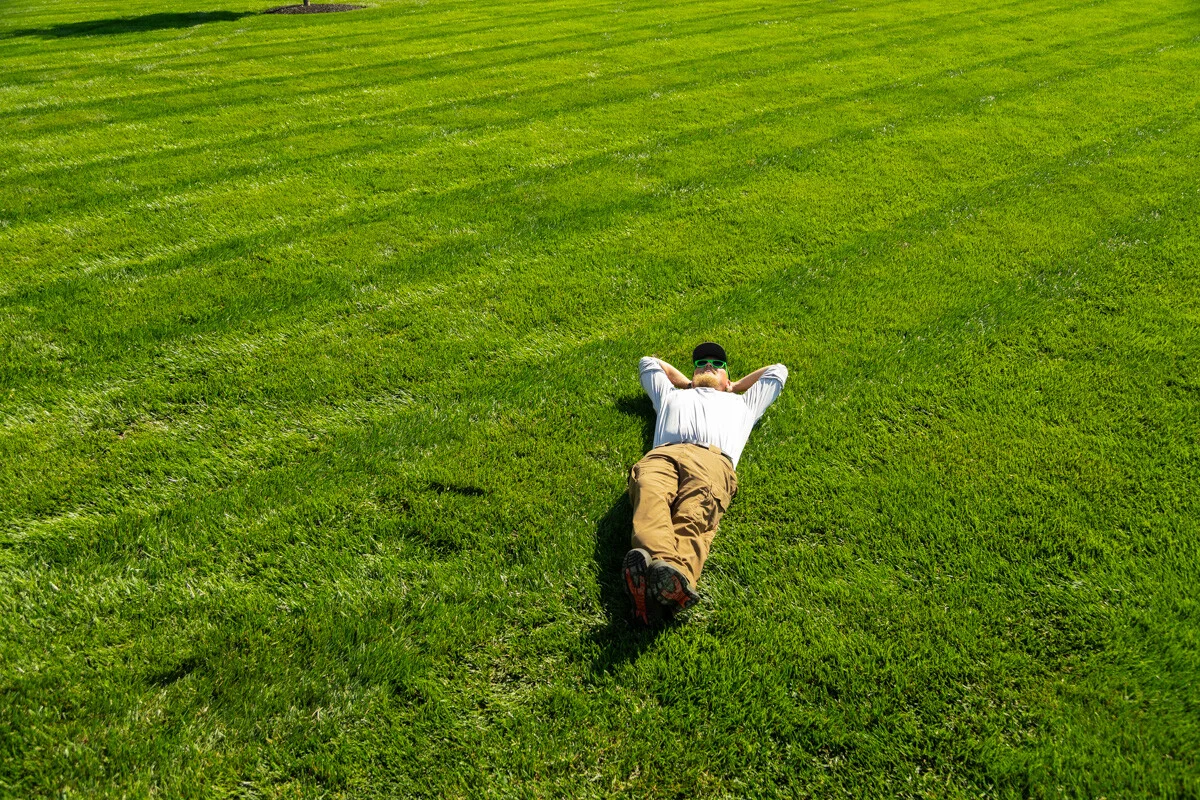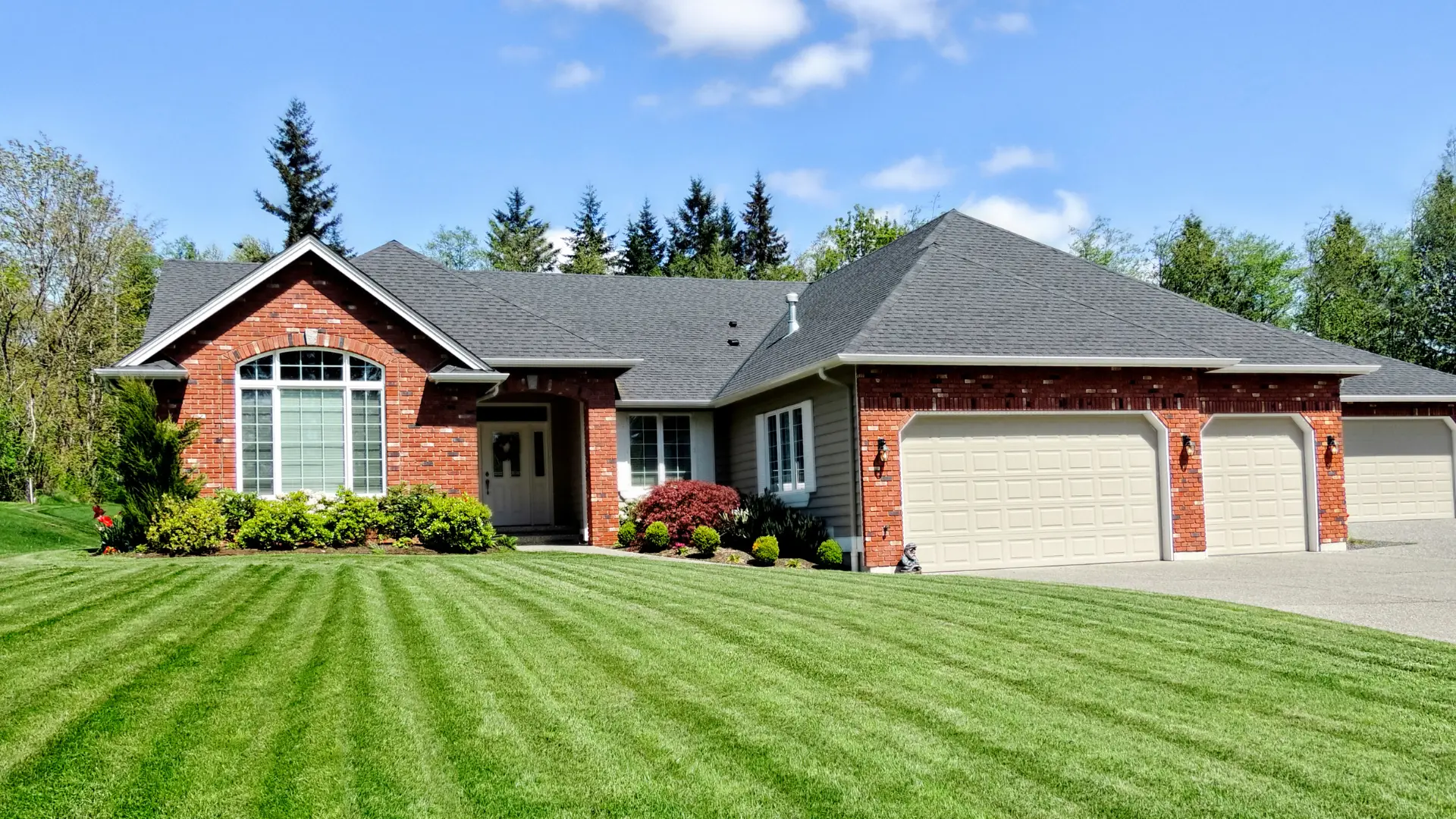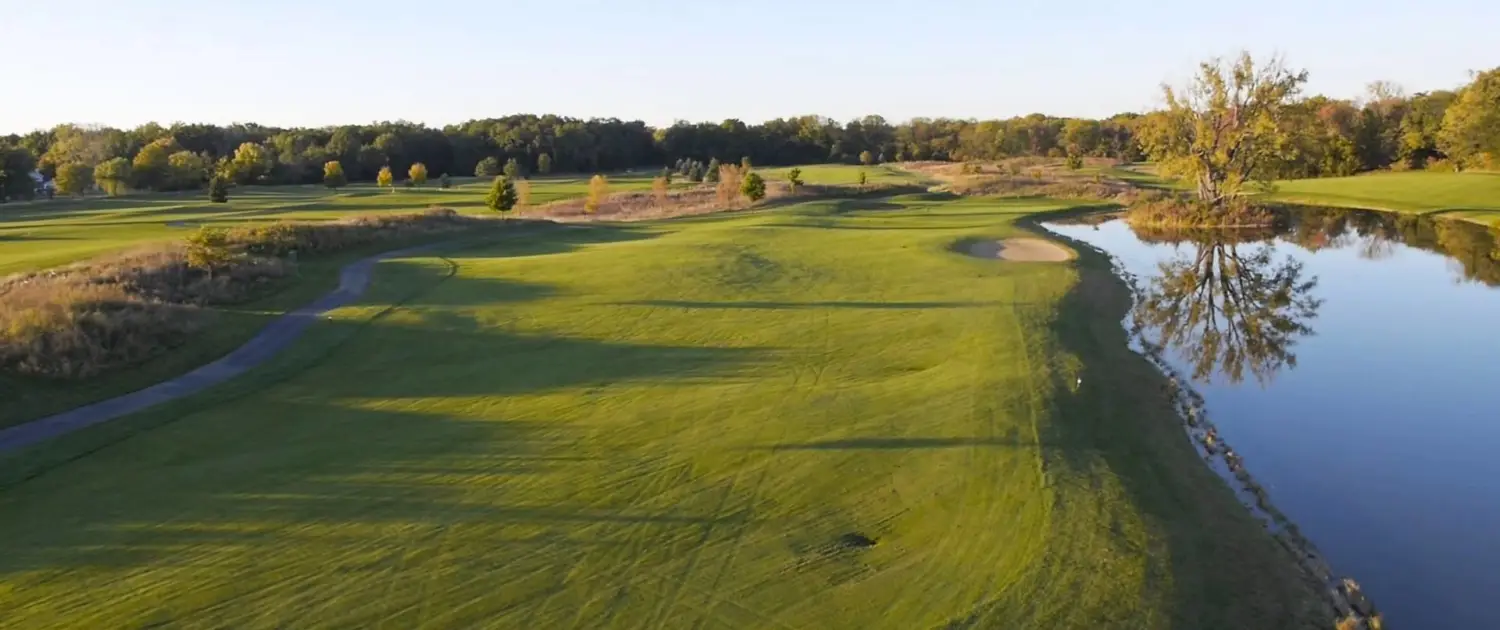At Genesis Sod Farms, July is one of the most important months for lawn care — and also one of the most misunderstood. As the heat turns up in Indiana, we start fielding a lot of the same questions from homeowners and even contractors. Whether you’re maintaining a newly sodded lawn or supporting clients with established turf, here are the most common concerns and what to do about them.
Why Is My Grass Turning Brown?
One of the top questions we get: “Is my lawn dead?”
Probably not. In Indiana, cool-season grasses like Kentucky bluegrass and fescue often go dormant during extreme heat to conserve energy. Dormancy is a natural survival mechanism, not a death sentence.
For homeowners:
If the lawn turns straw-colored but the crown (base of the blade) is still green or white, it’s alive. Avoid fertilizing or overwatering during dormancy — this could do more harm than good.
For contractors:
Educate your clients about summer dormancy. Offer them a watering schedule and reassurance. It’s often better to let the lawn rest than to push growth when it’s under heat stress.
How Often Should I Water?
This is the golden question — and the answer isn’t one-size-fits-all.
General rule:
Water deeply and infrequently. Aim for 1 to 1.5 inches per week (including rainfall), applied in two or three waterings, early in the morning.
Pro tips:
-
Avoid daily, shallow watering — it leads to weak roots and fungal issues.
-
Use a rain gauge or tuna can to measure.
-
Adjust zones for sunny vs. shady areas.
Contractor note:
Make sure homeowners understand that more is not better. Encourage proper irrigation system checks and educate them on signs of overwatering — like mushrooms, standing water, or thatch buildup.
Should I Change My Mowing Routine?
Yes. July is not the time for a buzz cut.
Key mowing tips:
-
Mow high — keep blades at 3–4 inches.
-
Never cut more than 1/3 of the grass blade at a time.
-
Keep blades sharp to avoid tearing the grass.
-
Leave clippings on the lawn to return moisture and nutrients.
Contractors:
If you’re offering mowing services or subbing it out, remind your crews not to scalp the lawn — especially in the heat. Taller grass shades the soil and helps retain moisture.
Should I Fertilize in July?
Only if absolutely necessary — and with care.
For homeowners:
We generally advise against applying heavy nitrogen in July unless it’s a specific slow-release, low-nitrogen formula. Too much fertilizer can burn your lawn in the heat and stimulate growth the grass can’t support.
For contractors:
If you’re maintaining a client’s property, go for a slow-release summer blend or organic option. Better yet, hold off until early fall for your next feeding and start prepping for aeration and overseeding.
What If I Need to Patch or Replace Sod?
Yes, you can still lay sod in July — but timing and care are critical.
-
Install early in the day to avoid peak heat.
-
Ensure the soil is well-prepared and moistened before laying.
-
Water immediately after installation and continue with a strict watering schedule for the first 2–3 weeks.
-
Avoid foot traffic until the sod has rooted.
Tip for contractors:
Need a few rolls to finish a job or patch a lawn? Genesis Sod Farms offers custom-cut sod — whether you need a whole pallet or just a few rolls, we’ve got you covered.
Final Thoughts
July is a balancing act — too much water, mowing, or fertilizer can do more harm than good. Whether you’re a contractor supporting multiple clients or a homeowner caring for your own lawn, understanding the why behind each action can make all the difference.
Have questions?
We’re always happy to help. Call or stop by Genesis Sod Farms for guidance, custom orders, or to talk turf. Let’s grow something great — even in the heat of summer.




